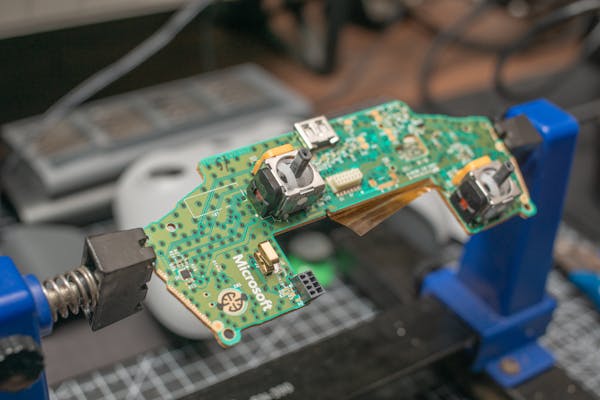Nanotechnology, the manipulation of matter at the atomic and molecular scale, has emerged as one of the most promising fields of research and development in recent decades. By operating at the nanoscale, scientists and engineers can create materials and devices with novel properties and functionalities that are unattainable with conventional approaches. The applications of nanotechnology are vast and span across various sectors, including medicine, electronics, energy, and environmental science. This article explores the diverse world of nanotechnology, highlighting its fundamental principles, key developments, and the benefits of nanotechnology in transforming industries and improving human life.
What is Nanotechnology?
Nanotechnology involves the design, production, and application of materials and devices by controlling shape and size at the nanometer scale. A nanometer is one-billionth of a meter, and materials at this scale often exhibit unique physical, chemical, and biological properties compared to their bulk counterparts. This field is interdisciplinary, combining elements of physics, chemistry, biology, materials science, and engineering.
The concept of nanotechnology was popularized by physicist Richard Feynman in his famous 1959 lecture, “There’s Plenty of Room at the Bottom.” He envisioned a future where manipulating individual atoms and molecules could lead to new manufacturing processes and products. Since then, advancements in microscopy and fabrication techniques have enabled scientists to observe and manipulate matter at the atomic level, making Feynman’s vision a reality.
Key Developments in Nanotechnology
1. Nanomaterials
Nanomaterials are materials with at least one dimension in the nanoscale range. They can be synthesized in various forms, such as nanoparticles, nanowires, nanotubes, and nanofilms. The small size and high surface area of nanomaterials often result in unique properties, such as enhanced strength, electrical conductivity, and chemical reactivity.
Carbon Nanotubes (CNTs): Discovered in the early 1990s, CNTs are cylindrical nanostructures made of carbon atoms. They exhibit exceptional mechanical strength, electrical conductivity, and thermal conductivity. CNTs have potential applications in electronics, composites, and energy storage.
Graphene: A single layer of carbon atoms arranged in a hexagonal lattice, graphene is known for its extraordinary electrical and thermal conductivity, mechanical strength, and optical properties. It has potential applications in flexible electronics, sensors, and advanced materials.
Quantum Dots: These are semiconductor nanocrystals that exhibit quantum mechanical properties. Quantum dots can emit light at specific wavelengths when excited, making them useful in displays, imaging, and solar cells.
2. Nanofabrication Techniques
Advancements in nanofabrication techniques have enabled the precise control and manipulation of nanomaterials. Some of the key techniques include:
Top-Down Approaches: These involve starting with a larger material and removing parts to achieve nanoscale features. Lithography, etching, and milling are common top-down techniques used in the semiconductor industry for fabricating microchips.
Bottom-Up Approaches: These involve assembling materials from atomic or molecular components. Chemical vapor deposition, self-assembly, and molecular beam epitaxy are examples of bottom-up techniques used to create nanomaterials with specific properties.
Nanolithography: A combination of top-down and bottom-up approaches, nanolithography involves patterning nanoscale features on a substrate. Techniques such as electron beam lithography and nanoimprint lithography allow for the creation of intricate nanostructures.
Benefits of Nanotechnology
Nanotechnology offers numerous benefits across various fields, leading to innovative solutions and improved performance in products and processes. Some of the key benefits of nanotechnology include:
1. Medicine and Healthcare
Nanotechnology has revolutionized the field of medicine and healthcare, enabling the development of new diagnostic tools, targeted drug delivery systems, and regenerative therapies.
Drug Delivery: Nanoparticles can be engineered to deliver drugs to specific cells or tissues in the body, improving the efficacy and reducing the side effects of treatments. For example, liposomes and polymeric nanoparticles can encapsulate drugs and release them at the target site, enhancing the treatment of diseases like cancer.
Diagnostics: Nanotechnology has enabled the development of highly sensitive diagnostic tools. Quantum dots and nanoparticles can be used as contrast agents in imaging techniques, allowing for the early detection of diseases. Nanobiosensors can detect biomolecules at low concentrations, facilitating the diagnosis of infections and other medical conditions.
Regenerative Medicine: Nanomaterials can mimic the natural extracellular matrix, providing a scaffold for tissue regeneration. This has potential applications in wound healing, bone regeneration, and organ transplantation.
2. Electronics and Computing
The miniaturization of electronic components has been a driving force in the advancement of nanotechnology. Nanoscale materials and devices have led to significant improvements in the performance and efficiency of electronic systems.
Transistors: The development of nanoscale transistors has enabled the continued scaling down of microchips, following Moore’s law. This has resulted in faster and more efficient processors for computers and mobile devices.
Memory Storage: Nanotechnology has led to the development of high-density memory storage devices, such as flash memory and solid-state drives (SSDs). These devices offer faster data access and greater storage capacity compared to traditional hard drives.
Flexible Electronics: Nanomaterials like graphene and CNTs have enabled the development of flexible and transparent electronic devices. This has potential applications in wearable electronics, flexible displays, and electronic skin.
3. Energy and Environment
Nanotechnology offers innovative solutions for energy generation, storage, and environmental protection.
Solar Cells: Nanomaterials can improve the efficiency of solar cells by enhancing light absorption and reducing energy losses. Quantum dots and perovskite materials have shown promise in developing cost-effective and highly efficient solar cells.
Batteries: Nanotechnology has led to the development of advanced batteries with higher energy densities and faster charging times. Nanomaterials like silicon nanowires and graphene have been explored as anode materials for lithium-ion batteries, offering improved performance.
Water Purification: Nanotechnology can be used to develop efficient water purification systems. Nanomaterials like graphene oxide and carbon nanotubes can remove contaminants from water, providing clean drinking water in areas with limited access to safe water.
Environmental Remediation: Nanoparticles can be used to remove pollutants from soil and water. For example, nanoscale zero-valent iron can degrade organic pollutants, while photocatalytic nanoparticles can break down harmful chemicals.
4. Manufacturing and Materials
Nanotechnology has transformed the manufacturing industry by enabling the production of materials with enhanced properties and novel functionalities.
Lightweight and Strong Materials: Nanocomposites, which combine nanomaterials with polymers or metals, offer improved mechanical properties, such as increased strength and reduced weight. These materials have applications in aerospace, automotive, and sports equipment.
Self-Cleaning and Anti-Fouling Surfaces: Nanotechnology has enabled the development of surfaces that repel water, dirt, and microbes. These surfaces can be used in self-cleaning windows, anti-fouling coatings for ships, and antimicrobial surfaces in healthcare settings.
Smart Textiles: Nanotechnology can be used to create textiles with enhanced properties, such as moisture-wicking, UV protection, and odor resistance. Smart textiles can also incorporate electronic components for applications in wearable electronics and health monitoring.
Challenges and Ethical Considerations
While nanotechnology offers numerous benefits, it also presents challenges and ethical considerations that need to be addressed.
1. Health and Safety Risks
The unique properties of nanomaterials raise concerns about their potential health and environmental risks. Due to their small size, nanoparticles can enter the human body through inhalation, ingestion, or skin contact, potentially causing adverse effects. The long-term effects of exposure to nanomaterials are not yet fully understood, and there is a need for comprehensive risk assessment and regulation.
2. Environmental Impact
The production and disposal of nanomaterials can have environmental implications. The release of nanoparticles into the environment could affect ecosystems and wildlife. It is essential to develop sustainable manufacturing processes and disposal methods to minimize the environmental impact of nanotechnology.
3. Ethical and Social Implications
The widespread adoption of nanotechnology raises ethical and social questions, such as privacy concerns with nanoscale sensors and the potential for unequal access to nanotechnology-based healthcare. It is important to engage in public dialogue and establish ethical guidelines to ensure the responsible development and use of nanotechnology.
Conclusion
Nanotechnology has the potential to revolutionize various industries and improve the quality of life through its innovative applications. The benefits of nanotechnology are vast, ranging from advancements in medicine and healthcare to improvements in electronics, energy, and environmental protection. However, it is crucial to address the challenges and ethical considerations associated with this technology to ensure its safe and responsible development. As research and development in nanotechnology continue to advance, the future holds exciting possibilities for the nanoscale world, with the potential to transform our lives in ways we can only begin to imagine.




